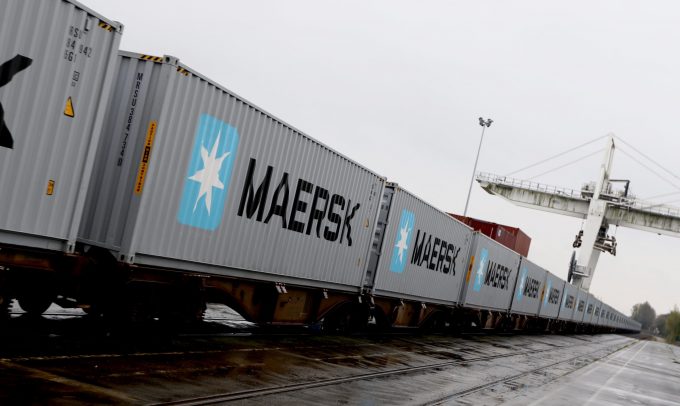Temporary Baltimore shipping channel shift in bid to remove MV Dali
The temporary 30ft channel that allowed larger vessels to transit Baltimore harbour has been closed, ...

Maersk said yesterday it would ‘sidestep’ the Panama Canal and use freight rail to get cargo across Panama.
Its Oceania-Americas (OC1) service usually goes through the Panama Canal, unloading cargo for South America at the ports at Cristobal and Cartagena, before heading to the US east coast gateways of Philadelphia and Charleston.
The canal saw throughput of 10.9m in 2022, but with its water levels in the doldrums, thanks to the El Nino phenomenon, draught restrictions have reduced the amount of cargo vessels can carry and limited the number of transits, resulting in long queues and delays.
Yesterday Maersk told customers the OC1 would make use of a Panama “land bridge” via the rail network. Containers headed east will be unloaded at Balboa, while westbound boxes will be dropped off at Manzanillo.
Searoutes data suggests the rail trip across the isthmus would generate around half the CO2 of a journey through the canal by ship.
Maersk says it will also omit the port of Cartagena, an important transhipment hub in Colombia.
Deploying 11 vessels with an average capacity of 3,400 teu, and including 10% slot-chartered each by Hapag-Lloyd and MSC, according to data from eeSea, it remains to be seen whether the Panama Canal Railway Company (PCRC) can provide enough capacity for the OC1.
Since the railway’s revitalisation in 2011, its capacity is claimed to be as high as 2m teu a year, or around 2,740 teu each way a day.
The PCRC is owned and operated by a joint-venture of US Class I Canadian Pacific Kansas City (CPKC) and Mi-Jack Products, a Chicago crane manufacturer which branched out into intermodal rail operations. It uses double-stacked bulkhead cars and 18 locomotives built between 1972 and 1995.
Maersk’s move also raises the question of whether other rail capacity in Central America might come into use, with Mexico’s Corredor Interoceánico project, completed in December, also pledging to provide some 1.14m teu of capacity in due course.
In an October UK Financial Times article, Lars Østergaard Nielsen, Maersk’s VP of operations, Americas, was quoted as saying that the project “could be very useful”.
But Benjamín Alemán, former director of Mexico’s Rail Transport Regulatory Agency, told the BBC in October Mexico did not offer sufficiently deep draughts to cater for the ships currently transiting Panama.
“Ships with smaller cargo, not necessarily containers, could arrive in Mexico and go to destinations in the US other than the east coast,” he said.
Comment on this article